Our Blogs

Step-By-Step Guide To Baby Bottle Sterilizers
A baby bottle sterilizer set comprising the baby bottle sterilizer machine, sterilizing tablets, cleaning equipment and a mild cleanser have now become an integral part of essential products that parents buy after the birth of a baby. Cleaning of feeding bottles and other feeding equipment after each use helps to get rid of residue and stains from the equipment. However, the benefits of a baby bottle sterilizer cannot be denied. Why is a bottle sterilizer important? Feeding bottle sterilization is a requisite to remove germs that may be present due to breast milk residue or product build up from formula milk.
How Does A Baby Bottle Sterilizer Work?
Steam sterilizers have inbuilt technology that releases steam which effectively kills germs and harmful bacteria. It is important to ensure that the baby bottle sterilizer instructions provided by the manufacturers are followed correctly as each machine may have different operational methods. PIGEON Multi-Function Sterilizer plays other roles in addition to being a sterilizer as it comes with triple functions of being a baby bottle sterilizer, baby food warmer and baby bottle warmer.
Other ways of sterilizing include the traditional method of sterilizing baby bottles in boiling water or using the microwave’s steam power to sterilize the bottles. The advantage that electric steam sterilizers enjoy over the other methods is that they have a higher temperature than boiling water, and can hence kill more bacteria and mold than the other two methods. They are also the quickest way to sterilize the bottles (for those who sterilize the bottles frequently or on a daily basis) and keep them sterile till the next use.
In case of emergencies, or while traveling, if it is impossible to carry a sterilizer along, a baby bottle sterilizer solution is a good way to sterilize the feeding bottles. PIGEON Sterilizing Tabs are easily soluble in water (cold or lukewarm), the bottles do not need a further rinse after using the solution, and the same solution can even be reused if it is within 24 hours.
What Items Can Be Sterilized?
Sterilizers are used for sterilizing feeding equipment like feeding bottles, baby bottle nipples, removable parts of the breast pump that come in contact with the breast milk (check instructions to see if a part can be sterilized), pacifiers, nipple shields, and even small toys that babies tend to put into their mouth. The sterilizers are for glass baby bottles as well as plastic feeding bottles (that are made of BPA-free material) and silicone materials.
How Often Should Feeding Bottles Be Sterilized?
While feeding bottles need to be cleaned after every use, they need not be sterilized after every use. An easy way to keep track of sterilization is to use the sterilizer at the end of each day and sterilize all the used feeding equipment in one go. Using a sterilizer like PIGEON Rapid Steam Sterilizer will help to sterilize up to 5 feeding bottles at a time in a swift sterilizing cycle of 6 minutes.
How To Clean Baby Bottle Sterilizer?
While it is recommended that baby bottles and other feeding equipment be sterilized every day after use, how often should the sterilizer itself be cleaned? A broad guideline is to clean the sterilizer thoroughly every month or after 30 cycles of use. By this time, limescale may accumulate on the walls of the sterilizer and this needs to be descaled. Cleaning the sterilizer can start with wiping down the insides with a damp cloth. Following this, a cup of white vinegar can be poured into the sterilizer and left overnight. Then, the sterilizer can be emptied of the liquid and rinsed in cold water and wiped down again with a cloth to remove any residue of the limescale.
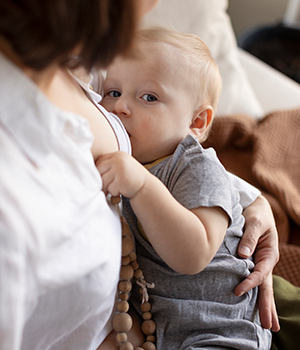
Common Mistakes To Avoid When Buying Breastfeeding Products
There are a few products for breastfeeding that mothers buy when they decide to nurse their babies. Most often, these purchases are guided by discussions in baby forums and a large number of advertisements for baby products from the best brands. Common breastfeeding products bought by nursing mothers are breast pumps and breastfeeding pump accessories, feeding bottles, nipples, storage bottles and bags for expressed breast milk, nursing bras, and nipple shields. There are certain things to keep in mind while buying breastfeeding products for moms.
Choosing Safe Breastfeeding Products
After addressing the question of what breastfeeding accessories I need, parents should move on to the more pertinent question of how safe are those accessories for the baby. Just as it is important to identify products that are comfortable to use, it is important to ensure that the products are made of good quality materials that are safe for the baby. PIGEON breastfeeding bottles are made of either top-quality borosilicate material or BPA-free plastic that is safe for babies. PIGEON nipples and nipple shields are made of premium quality silicone that is soft, elastic, and comfortable for the baby.
Breast Pumps and Breast Pump Accessories
Breast pumps are a great investment for mothers who breastfeed their babies. Since the benefits of breastfeeding, particularly in the first six months after birth, far outweigh bottle feeding, mothers are often keen to continue exclusively breastfeeding even when the baby needs to be fed every two hours or so. Pumping and breastfeeding provide the mother more freedom whether it is to go to work, step out of the house on errands or for leisure, or just take a nap when exhausted while looking after the baby. Common breast pumping tips include buying the breast pump that is most suited to the mother’s lifestyle and requirements, buying breast pumps with a bottle stand (in case of electric pumps) to avoid spilling, choosing pumps with ergonomic designs that reduce hand fatigue (in case of manual pumps) and looking for flanges that fit perfectly with the mother’s breast in order to comfortably express breast milk. PIGEON breast pumps come with Comfort ProperFit™” Soft Silicone Cushion that has a secure seal for efficient and comfortable pumping, a 2 Phase Technology providing Stimulation and Expression modes to initiate milk flow as well as to maximize the flow of breast milk while pumping.
Breast Milk Storage Guidelines
The duration for which the expressed breast milk is being stored determines the method of storage. If the breast milk is being used within 24 hours after being pumped, it should be stored in breast milk storage bottles in the refrigerator. PIGEON breast milk storage bottles are compatible with their feeding bottle nipples, making it easy to feed the baby from the storage bottle after the milk is warmed up. If the breast milk is not going to be consumed by the baby within 24 hours of expression, it should not be stored in the refrigerator. The expressed breast milk should then be stored in sterile breast milk storage bags and placed in the freezer, with the most recent bag being placed last. It is important to note down the date and time of expressing the breast milk on the storage bag so that the older bags can be emptied first. PIGEON breast milk storage bags are self-standing bags that come with leak-proof double zipper seals and are pre-sterilized with gamma rays for hygiene and safety before use. Once defrosted, the contents of the breast milk storage bags should not be frozen again since they are no longer sterile. The milk can be warmed up for bottle feeding breast milk to the baby through feeding bottles.
How Often Should Feeding Bottles Be Sterilized?
Breast milk can leave a residue that needs to be cleaned thoroughly with a feeding bottle and nipple brush after every use to ensure that it does not become a breeding ground for germs. For increased protection, feeding bottles and nipples must be sterilized at least once a day. PIGEON sterilizers come with fast sterilization cycles and can accommodate a good number of feeding bottles in a single cycle, making them a much sought-after feeding accessory among mothers.
With just a little attention to detail to identify and use the right products, it is possible to make breastfeeding a comfortable and happy experience for the mother and her baby.
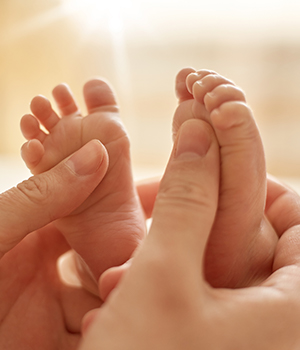
Busting 5 Myths About Baby Skin Care Routine
Baby skin care advertisements would have us believe that babies are born with ‘baby-soft’ skin naturally and that it remains that way. This is not really true. In this article, we look at five of the common myths surrounding a baby’s daily skincare routine and the newborn skin care products that can be used safely.
Myth 1: All Babies Are Born With Soft, Supple Skin
Fact: Soft, smooth, and supple skin requires real tender, loving care and the right baby skin products. Babies have delicate and sensitive skin that is very prone to infections and rashes. It is also thinner than adult skin and loses moisture five times faster than the latter. The skin needs hydration with a moisturizer for newborns so that it does not dry up, especially after a bath or when the weather is colder. The more moisturized the baby’s skin is, the softer it will be.
Myth 2: Newborn Babies Should Be Bathed Everyday
Fact: Newborn sensitive skin does not need a daily care routine. In fact, even water is not required for a daily skincare routine for sensitive skin unless it is to clean up after a diaper change or to wipe the baby’s mouth after a feed. A newborn baby should not be given a bath till the umbilical cord has fallen off and the natural protective coating on their body (the vernix) goes away on its own - therefore the baby’s first bath can be as late as one to two weeks after birth. Even then, the baby does not need to be bathed daily. Bathing daily could actually harm the baby’s skin by stripping it of natural oils and moisture.
Myth 3: Cradle Cap Is Flaky Skin And Should Be Removed Immediately
Fact: Babies generally develop a skin condition known as cradle cap where oily, yellowish patches or plaques develop on the baby’s scalp and crown and sometimes on their forehead, eyebrows, and around the ears. The cradle cap usually clears up on its own, particularly if the baby’s hair and scalp are kept clean with a gentle shampoo. It is important not to rub the flaking cradle cap as it could irritate the skin further. If the cradle cap does not clear up on its own in a couple of months, it is advisable to consult a pediatrician for further measures.
Myth 4: All Organic Skin Care Products Are Good For Babies
Fact: Just because the ingredients of a skincare product are organic does not mean it is good for a baby’s skin. Many of the naturally occurring ingredients in products are really strong and may adversely affect the delicate skin of babies. The best newborn skin care products contain natural oils like olive oil, jojoba, and chamomile that are not only natural but also gentle on the baby’s skin. In order to keep the baby’s skin safe, moisturized, and supple, the skin care products must also be free from parabens and be hypoallergenic.
Myth 5: Wearing A Diaper Causes Rashes
Fact: One thing that parents quickly realize after the birth of a baby is that they go through an incredibly large number of diapers every day. There is a general myth that diapers can cause rashes because they are not breathable. This is not correct. Diapers as such do not cause rashes. It is important to change diapers when they are soiled or wet. Not changing the diapers as soon as they are wet or soiled or using diapers that are too tight for the baby are the likely reasons for diaper rash.
Products For Skin Care For Newborns
The best daily skincare routine at home naturally should include products that are mild and gentle but still effective to clean and nourish the baby’s skin. PIGEON skin care products have been developed after comprehensive research into the skin care needs of babies and are dermatologically tested to be hypoallergenic, nourishing, and safe for babies. 90% of the ingredients in their Natural Botanical Baby set of skin care products are of natural origin that keeps the skin clean and fresh and gives it the hydration it needs.
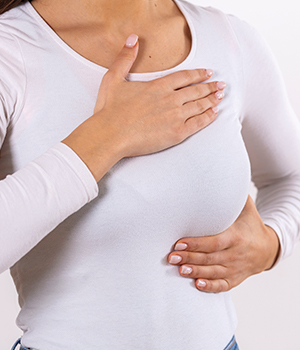
How Do Breast Pumps Benefit Babies?
Breastfeeding is important for babies, and that is not only because it is their source of food and nutrients for the first six months after birth. Breastfeeding is a time when the mother and the baby form a unique bond with each other and this provides the baby with a sense of calm, comfort, and security. It is also an important way for the baby to build immunity since breast milk contains water, protein, carbohydrates, lipid fats, essential vitamins, and minerals including calcium, magnesium, potassium, phosphorus, and sodium. Breastfeeding has also been linked to a lowering in the risk of obesity in babies. Unfortunately, it is not always possible for mothers to exclusively breastfeed their babies due to health reasons or when they need to get back to work or stay away for extended periods of time. This is when breast pumps are useful.
When To Pump While Breastfeeding Newborn
In case the mother faced complications during pregnancy or delivery, or if the baby was born very premature or is ill at birth, it is advisable to express breast milk and feed the baby. The mother or the baby (or both) may not be in a position to nurse comfortably but by pumping the milk, even a caregiver will be able to provide the baby with breast milk.
When the baby is exclusively breastfeeding, it is a good idea for the mother to have a breast pump at hand. If the baby feeds only from one breast at a time or in smaller quantities (especially in the first few weeks after birth), the mother may need to use a good breast pump to express breast milk from the other breast. The mother not emptying her breasts completely after a feed could lead to painful conditions like mastitis.
When the mother’s breast milk supply is low, using a breast pump can help to stimulate the mammary glands and help to express breast milk better. The best breast pump for low milk supply is a hands-free breast pump that can pump more. Pumping more is one of the ways to help a mother to improve her supply of breast milk.
If the baby is not gaining weight with exclusive breastfeeding, expressing the breast milk with a breast pump and feeding the baby will help the mother to keep track of how much milk is being consumed by the baby.
Types Of Breast Pumps
There are two types of breast pumps - manual breast pumps and electric breast pumps. The choice between a breast pump manual vs electric is determined by the cost of the product, the convenience and ease of use, the frequency of pumping, and access to electricity.
Manual breast pumps are smaller in size and less expensive than electric breast pumps. It is important to look for pumps that do not cause hand fatigue while pumping and are easy to maintain. If the mother does not intend to use the breast pump more than once a day, it may make sense to go for a manual pump. It is also a good backup pump even if the mother owns an electric pump because a manual pump does not need electricity to run.
Electric breast pumps are very convenient to use multiple times a day as they do not need any manual effort. They are easy to carry around, especially if the mother is at work or traveling. Electric breast pumps can be plugged in or battery-operated and can help to draw the breast milk out faster than manual pumps.
PIGEON breast pumps are among the top breast pumps available in the market today. With a 2 Phase Technology that has two modes - Stimulation and Expression modes - and a comfortable ProperFit™ Soft Silicone Cushion that fits perfectly for efficient pumping, the breast pumps are convenient for breastfeeding mothers to use. Both the manual and electric breast pumps provide hygienic feeding as they have a no-backflow feature that stops the milk from flowing back into the funnel.
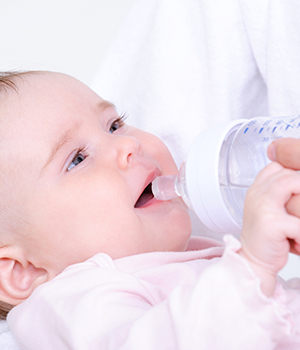
How do we sterilize baby feeding bottles?
For a mother, keeping her baby safe and free from illnesses is her top priority. With babies tending to put anything and everything into their mouths, it becomes important to keep them clean and germ-free. With their developing immune system, the chances of falling sick are high. Feeding bottles and pacifiers have become a staple on a new baby checklist. These are also the things that go into the baby’s mouth the most often.
Do feeding bottles need to be sterilized?
Traditionally, feeding bottles would be sterilized by boiling them. This was because the drinking water that was available in earlier days was considered unsafe and it could be used for drinking only after being filtered, boiled, and cooled. Some doctors say that because most countries now have potable treated water flowing through their taps, sterilization is unnecessary. There is reason to believe that this may not be true.
Cleaning and sterilizing are different from each other. Cleaning thoroughly can help to remove the formula, milk, and dirt that accumulates in the bottles and it washes away some of the bacteria and viruses as well. Sterilizing will ensure that the remaining bacteria are also eliminated. Potable water means that the water is safe for adult consumption but the fragile immunity of little babies may not be able to fight against the same bacteria that an adult immune system can brush off. Not sterilizing bottles and other feeding equipment can cause the baby to vomit or have diarrhea. Sterilization is advised till the baby turns one year old. Even with a baby who tends to crawl and put things in her mouth, sterilization of feeding equipment will be required as feeding product residue often contains more harmful bacteria than those found on toys and other things on the floor.
New bottles that have been purchased for the baby need to mandatorily be sterilized once they have been removed from their packaging and before being used by the baby.
Though using borrowed or hand-me-down bottles is not recommended, if you are using them it is critical to sterilize them before giving them to your baby for the first time. This includes bottles that have been used for older siblings in your own home.
How often do feeding bottles need to be sterilized?
On a daily basis, feeding equipment does not need to be sterilized more than once a day especially if the baby is using multiple bottles and nipples throughout the day. Thoroughly cleaning the feeding equipment after every use and sterilizing them once a day would also help reduce the effort of the new mothers.
If the baby has been sick or if you or other family members have been dealing with a contagious illness, or if another child has used their bottle, it is recommended to sterilize more often during the day. Similarly, if your baby was premature or has health issues, it may be good to sterilize their feeding equipment after every use till they turn three months of age.
Are bottles the only baby equipment that needs to be sterilized?
When thinking of sterilizing, the immediate thought that comes to mind is feeding bottles and their nipples. These require to be sterilized because of the milk or formula that they come into contact with and the bacteria that could breed from their residue. Pacifiers are another thing that babies have in their mouths on a daily basis and they are required to be sterilized as well. Breast pumps used to express milk will also need to be sterilized. If the baby has been introduced to solid foods before six months of age, it would be wise to sterilize the bowls and spoons as well. After the baby turns six months old, only feeding equipment and breast pumps need to be sterilized till your baby turns one year old.
How can feeding equipment be sterilized?
There are multiple ways of sterilizing the feeding equipment.
The traditional method of sterilization is to boil the feeding equipment in a large pan of water for at least 10 minutes, making sure it all stays under the surface. Ensure that the feeding equipment is mentioned as safe to boil or you may end up damaging the bottles and nipples.
Steam sterilizing using an electric sterilizer is a convenient way of sterilizing feeding bottles and nipples. When using a sterilizer, ensure that the openings of the bottles and nipples are facing downwards. Good-quality sterilizers from recognized brands come with manufacturer’s instructions on how long the equipment can be safely stored in the sterilizer before it needs to be sterilized again. Sterilizers also come in various sizes and the decision of which size to buy would depend on how many bottles are being used regularly and how compact you require them to be. PIGEON Sterilizers come with swift sterilization cycles and have an auto switch-off function for additional security. In addition to sterilization, PIGEON Multi-Function Sterilizer performs the functions of a Food Warmer and Bottle Warmer, with all sizes of PIGEON feeding bottles fitting into the sterilizer.
When you are traveling or need a handy way of sterilizing bottles, nipples, and other equipment, cold water sterilization using sterilizing tablets proves effective. The equipment will need to be completely immersed in the sterilizing solution for the prescribed time. The sterilizing solution will also need to be changed every 24 hours. PIGEON Sterilizing Tabs are easily soluble in cold or lukewarm water and the feeding equipment does not need to be rinsed after using the sterilizing solution.
How should the sterilized bottles be stored?
It is best to leave the bottles and nipples in the sterilizer or pan till you need to use them. However, if the items have been unused for a period of more than 24 hours, it is advised to sterilize them again. If taken out of the sterilizer, it is best to put on the nipples and lids on the bottles immediately. When handling sterilized equipment, it is best to wash and dry your hands thoroughly beforehand. Assembling of the bottles should also be done on clean, disinfected surfaces or on the upturned lid of the sterilizer.
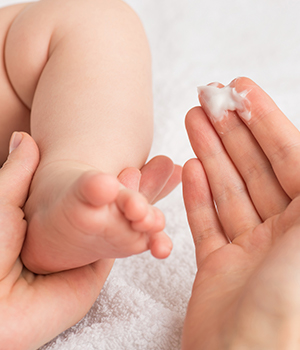
Choosing The Right Baby Lotion For Newborns
Keeping the baby’s skin soft, smooth, and supple is something all parents desire. Considering how delicate and sensitive the skin of newborn babies is, it is important to give them the right care and attention to keep the skin of the baby soft. Baby skin is prone to rashes and infections and these can be painful for the baby. The infant lotion must not only be moisturizing for the skin, it should also be mild and gentle so as to not cause any harm to the baby’s fragile skin.
Newborns and Lotions
Newborn babies come with a natural protective coating at birth known as vernix caseosa. The vernix keeps the baby’s skin hydrated and safe for up to a week after birth. Once the vernix falls off, the baby’s skin is unprotected and needs to be provided with nourishment so that it can remain healthy and supple. It is best to put on newborn lotion after bath. This will help to prevent dryness of the skin. In case of a rash or if there are patches of dry skin on the baby’s body, baby lotion must be applied to those areas often. The best lotion for newborn sensitive skin is one that is made with natural oils and is easily absorbed into the skin.
Points To Keep In Mind While Choosing Best Lotion For Newborn Dry Skin
Every baby’s skin reacts differently to moisturizing products which is why there are a few things that need to be kept in mind while choosing one for a baby:
- Seek the advice of the pediatrician - Based on the baby’s physical health, the pediatrician will be able to recommend a baby skincare moisturizing lotion that will suit the baby’s skin.
- Look for a mild product - When choosing a lotion safe for a newborn, look for a product that is hydrating while being gentle on the skin. The baby’s delicate skin may not be able to adapt to a strong moisturizer.
- Read the ingredient list - The ingredient list on the baby lotion can indicate whether the product is suitable for the baby’s skin needs and whether the lotion is gentle enough to be used by the baby.
- Look at product reviews - Reading the reviews for a particular baby lotion on reliable websites can help to assess whether the moisturizing lotion is suitable for the baby’s skin.
- Do a patch test - before using any skincare product on the baby’s body, it is important to do a patch test on the inside of the baby’s elbow to determine whether the baby has any allergic reaction to the ingredients in the product. This is true even if the baby is already using a different product of the same brand.
PIGEON Body Lotion For Newborns
Made with natural oils like Olive Oil and Argan Oil and extracts of Chamomile, PIGEON Natural Botanical Milky Lotion is the best newborn body lotion as it is soaked in easily by the baby’s skin and keeps it soft and healthy. Putting the lotion on newborn babies after a nightly bath is highly recommended because it provides their skin with long-lasting moisturization of up to 24 hours and prevents skin dryness during the night. PIGEON newborn pure moisturizing lotion is hypoallergenic, free from parabens and alcohol, and is dermatologically tested to be safe for babies. It also has a non-greasy formulation that is easy to spread on the baby’s body and can be used all over the body, including the baby’s face.
PIGEON also has a Natural Botanical Baby Water Gel which can be used by the newborn during the daytime for added moisturization. The water gel is a lightweight formulation that provides instant hydration and nourishment.
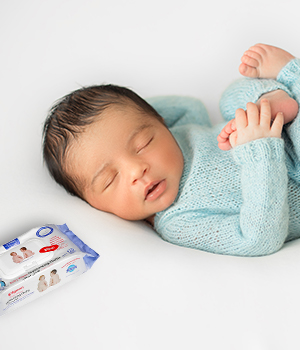
Choosing The Best Baby Wipes For Your Newborn
Wet wipes for babies are multi-purpose products that people put to a variety of uses. However, for wipes that come into contact with the baby’s delicate skin, particularly newborn skin, all baby wipes are not suitable. A question that comes to the minds of many parents is about which baby wipes are best for a newborn when there are so many different types of wipes flooding the market. Buying the most popular newborn baby wipes in the market should not be the consideration, since using the wipes may cause irritation, rashes, and allergic reactions depending on how sensitive the baby’s skin is.
Uses of Baby Wipes
There are numerous ways that baby skincare wipes can be used. While the most prominent use is to clean up during a diaper change, baby wipe uses also include cleaning up milk spit ups, as face wipes for baby, to freshen the baby up when sweaty or dirty, or even to wipe down the surfaces and toys that the baby comes in contact with. Considering how much contact they make with the newborn baby’s skin, it is important to choose natural baby wipes, predominantly made up of water, to ensure that it works well with their skin type and does not cause discomfort or irritation to the skin.
Benefits of Baby Cleaning Wipes
Baby wipes offer a lot of benefits over regular napkins or damp washcloths:
Convenient to Use - Since the wipes are disposable and need not be scrubbed clean after each use, they are a convenient option during diaper change at home or even while travelling.
Specially Formulated for Newborns - The newborn baby wipes are free from harsh chemicals, fragrance or alcohol as they are made specifically for the delicate skin of newborn babies.
Easy to Carry - Baby wipes come in big container packs as well as small packs that can be slipped into the bag for an emergency. This makes them easily portable no matter where the baby is.
Effective Cleaning - Wet wipes for babies have been created to clean the diaper area effectively. By changing soiled or wet diapers immediately, wiping down with a baby wipe, and applying a moisturizing barrier cream, it is possible to prevent diaper rash and irritation in the area.
Choosing The Best Wipes For Newborn Baby
The best wipes for the baby would depend on the individual needs of the parents / caregivers. When selecting baby wipes, keep the following in mind:
Features Offered - Baby wipes come in different materials and textures, they may be scented or free from fragrance, regular wipes or specifically formulated for sensitive skin, large wipes, thick wipes or stretchy wipes. Choose the wipes that are appropriate for the baby’s needs.
Convenience - Even though reusable cloths are more cost effective in the long run, the convenience offered by wet wipes may outweigh them, especially when the parents are working or just too exhausted to go through so much laundry while also looking after a newborn baby. Baby wipes are easily disposable, convenient, and hygienic as they are thrown away after use.
Cost - The cost of baby wipes should be calculated as the cost per wipe as well as total cost. Buying baby wipes in bulk would definitely bring down the cost per wipe but in the case of newborn babies, it may be prudent to buy smaller packs of two or three brands and try out what suits the baby before buying in bulk.
Packaging - At home, it is convenient to buy container type wipes with flip tops as you will be using the wipes in large quantities and the wipes will not be moved around too much or pressed against other objects (which could cause them to leak their wetness). To carry around in a bag or for short trips out with the baby, you may prefer smaller packs with a strong adhesive seal that can be popped in and out of the bag easily.
PIGEON Baby Wipes
PIGEON, one of the most trusted brands in baby care products, has two types of baby wipes as part of their hygiene care range.
PIGEON Baby Wipes Moisturizing Cloths - These are thick, durable wipes with added softness that have been microbiologically tested to ensure superior hygiene and quality and are strongly recommended for newborns and babies up to 6 months old. With a pH level of 5.0, these baby wipes are perfect for cleansing while retaining the skin's natural balance and contain natural lanolin oil which keeps the skin moisturized and acts as a protective barrier. The alcohol-free wipes come with a checkered texture that can be used to clean the diaper area effectively after removing the soiled diaper.
PIGEON Baby Water Wipes - Made with 99% pure water, these are extra soft wipes that are paraben-free, fragrance-free, and alcohol-free and come with an embossed sheet for better cleaning. They are suitable for use by newborn babies. The water-based baby wipes are weaved to clean thoroughly without tearing and can effortlessly clean the baby’s bottom while providing maximum softness for ultimate comfort and care during wiping. The wipes are available in container packs, as well as in smaller packs with a strong adhesive seal.
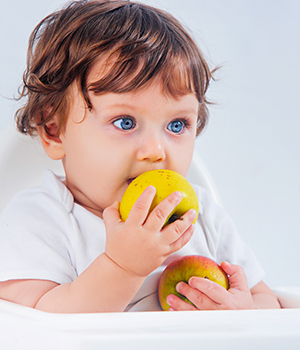
Initiating The Weaning Process - 5 Things to Consider
Till six months of age, medical experts recommend that babies be exclusively fed on breast milk or formula. As infants grow up, their nutritional needs change. Breast milk alone may not be sufficient to meet their requirements. Once they start to consume solids adequately, the process of breastfeeding or bottle feeding is slowly stopped. This process of transitioning babies who are completely dependent on milk to solid foods is known as the weaning process.
Importance of Weaning
When babies reach a stage where breast milk or formula does not provide the nutrients required for growth and development, they need to be introduced to other foods. In addition to providing nutrition, the purpose of weaning and consuming different foods with varied tastes and textures is to help the baby to practice lip, tongue, and jaw movements. The weaning diet also tends to determine the kind of relationship the baby develops with food in the future.
Five Important Considerations
The weaning process is also a great way for the baby to develop social skills as they get to eat with the other members of the family and share the food that others are eating. However, babies may crave the comfort that breastfeeding or bottle feeding offers them. Therefore, the process of baby weaning may cause emotional discomfort to some babies. This is why the weaning period could vary from just a few days to up to many months. Each baby is unique and its weaning journey will also be distinct.
When to Start Weaning
Instead of seeking at what age weaning should be started, it is important to see the baby’s development. Some babies may not be ready for weaning even after they reach six months of age and may poke out their tongue or push the food out of their mouths when fed on weaning foods. This is a reflex action on their part to prevent choking and it means they are not yet ready for solids. On the other hand, some babies may be very interested in watching others eat and may hold their mouths open and imitate eating behaviour or indicate through sounds and gestures that they wish to eat what the others are eating. If the baby is able to sit without the need for head support, does not display tongue-thrust reflex and expresses interest in eating, the baby is ready for weaning off.
Types of Weaning
There are two types of weaning methods that are commonly used by parents - traditional weaning and baby-led weaning.
Traditional Weaning - As per the traditional method of weaning, parents or caregivers feed the baby the food using a spoon and gradually introduce them to more solid foods. This makes the weaning process less messy and easier to keep track of. It also becomes easier to identify any food allergies and reduce the baby’s tendency to choke on food.
Baby-led Weaning - Baby-led weaning is when the baby is encouraged to self-feed from 6 months of age with baby fist-sized pieces of solid food being offered from the beginning stages itself. The baby has meals with other members of the family and consumes mostly the same food as the others so preparation of food is less time consuming. Research has also shown that baby-led weaning helps to reduce food fussiness and excessive weight gain as the baby is in control of how much food it consumes.
How to Start Weaning
As the baby transitions from breast milk or formula to other foods, it is better to start with foods that are smooth in texture and require less chewing in the initial weeks. The soft-textured foods are easier for the baby to swallow. The baby may spit out food in the beginning as its mouth gets used to the variety of tastes but may accept them if they are offered repeatedly over various meals. When weaning off breastfeeding, the feeds should be dropped one at a time over several days giving the baby time to adjust to the new tastes.
Types Of Weaning Food
Babies can start the weaning process with soft-textured foods like pureed fruits (bananas, mangoes, apples and prunes), pureed vegetables, (carrots, potatoes, pumpkin, and sweet potato), and single-grain cereals mixed with breast milk or formula. Once the baby gets used to purees, added textures of mashed foods, small pieces of pasta and teething rusks can be introduced. As the baby’s teeth erupt and he / she is able to bite into foods with more confidence, solid foods can be added. When introducing solids, it is important to watch out for choking hazards, especially through foods like grapes, cherry tomatoes, or sausages.
Stages Of Weaning
There are three broad stages of weaning. All babies may not go through the different stages in the same order, especially when they are following baby-led weaning.
Stage 1 - From around six months of age, new foods are introduced in addition to breast milk or formula that help the baby to explore new tastes and textures. The foods are introduced in very small quantities and are often mixed with breast milk or formula to help the baby transition into the new tastes better. Often, the foods are part of just one the baby’s meals in a day. The intake of breast milk or formula is not reduced during this time. The stage may last from a few days to up to a month.
Stage 2 - having grown accustomed to eating pureed and mashed foods, the baby is ready to graduate to lumpier and thicker textures and solid foods that require chewing. A good balance of iron rich foods, carbohydrates, proteins, vegetables and unsaturated fats can be included in the diet at this stage.
Stage 3 - Around the age of 9 months to one year, when the baby’s teeth have erupted, the variety of foods and textures provided to the baby can be further increased. Firmer, crunchier foods like carrot sticks, toast fingers, steamed vegetables and other foods that need to be bitten into and chewed well can be introduced in stage 3.
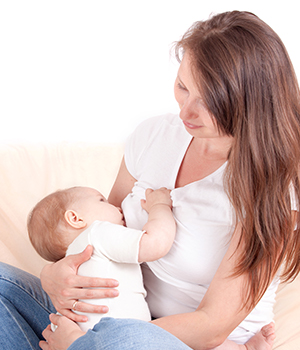
Everything About Breastfeeding That A New Mum Needs To Know
Breastfeeding can seem daunting to a new mum while still trying to figure out changes in her own body and trying to learn the baby’s cues. Most mums get the hang of the process of breastfeeding after the first few days while some struggle to get the baby to latch correctly.
What is Breastfeeding?
The World Health Organisation (WHO) defines exclusive breastfeeding (EBF) as when ‘an infant receives only breast milk, no other liquids or solids are given – not even water, with the exception of oral rehydration solution, or drops/syrups of vitamins, minerals or medicines’ (World Health Organization 2016). Medical experts recommend that infants be exclusively breastfed till they are six months of age.
Why Is Breastfeeding Important?
Breastfeeding is beneficial both for the baby and the nursing mother. Breast milk is the perfect food for the baby as it is clean, always at the right temperature and can be made available whenever the baby needs it.
Breast milk keeps the baby healthy as it is packed with nutrients in the right proportions. It changes constantly in volume and composition to meet the baby's needs as it grows. Breast milk is also great for building the baby’s immune system, and protects against allergies, infections, sickness, and obesity. The colostrum (thick, yellow fluid) produced by the breasts in the first few days after birth is an intensely concentrated and nutritious food for the baby.
Breastfeeding is good for mothers as it reduces their risk for certain kinds of cancers and Type II diabetes, and helps them to get back to their pre-pregnancy weight faster. It is also a free and convenient way to ensure that the baby has food while at home or even while travelling, without having to carry additional food, warm water or feeding bottles. Breastfeeding also helps to build a lasting bond between the mother and the baby.
Preparing To Breastfeed
The baby will start to demand food soon after birth. Therefore, it is important to be prepared for breastfeeding even before the baby is born. Attending an antenatal class can help the mother learn how to position the newborn for breastfeeding, how to release breast milk (expressing), how to latch the newborn for breastfeeding, how to increase milk supply for breastfeeding, the benefits of skin-to-skin contact, common breastfeeding problems, xand so forth.
Supply of Breast Milk
The supply of breast milk in the first few days after birth will be low and in higher frequency, and new mothers may worry about how to increase breast milk supply. Newborn babies have very small stomachs and still developing digestive systems and can take in very small quantities of breast milk at each time. By offering the baby both breasts at each feed and switching which breast you start feeding with will help to stimulate the breast milk supply. Skin-to-skin contact also stimulates the breasts to produce more milk.
Another doubt that new mothers have is about how to control overflow of breast milk. When the breasts are too full of milk, it can cause nipple pain when breastfeeding, breast engorgement or mastitis. This can cause the breasts to feel hard, tight, and painful. In the first few days after delivery, if the baby does not empty the milk produced, it could lead to engorgement. Breast engorgement may also occur later on when the baby is not feeding on a regular basis. Using a breast pump can help to empty the breasts of milk after the baby has finished feeding. If there is not much milk to be emptied, a milk saver pump will be useful.
Breastfeeding Problems
While every mother has a unique breastfeeding experience, there are a few issues that are commonly encountered while breastfeeding. Most of the problems are because the baby does not latch properly for a feed. When the baby does not latch properly, the feed is not satisfactory for him / her. The process of breastfeeding also becomes painful for the mother. In order to ensure a good latch, it is recommended to ensure that the baby’s chin touches the mother’s breast and the baby’s mouth opens wide around the mother’s breast, not just the nipple. If the baby has latched on properly, the baby’s ears will move slightly and his / her lips will be turned out.
Sore / Cracked Nipples
When the baby does not latch on properly and the mother’s nipples adjust to producing breast milk, the mother may experience sore or cracked nipples which can be discomforting and painful. A soft and flexible nipple shield with a wide contact surface can help to relieve pain due to latch-on problems.
Inverted Nipples
Flat or inverted nipples can prevent the baby from latching on to the breast sufficiently. The cause of inverted nipples is mainly congenital, when milk ducts are not fully developed or when the nipple base is too small. With the help of a nipple puller, the inverted nipples can be gently pulled out for the baby to latch on. The nipple puller also helps in cases of engorgement since it massages the breast to enable the mammary glands to produce more milk.
Breast Milk Storage
Newborn babies do not drink a lot of milk at each feed. The overflow of milk which is expressed with a breast pump needs to be stored safely and hygienically for it to be used later on. If the expressed breast milk will be used in the same day, it can be stored in breast milk storage bottles in the refrigerator. If the breast milk is being stored for longer periods, it can be freezed in breast milk storage bags and stored for 6-12 months.
When Should Breastfeeding Stop?
There is no right time to stop breastfeeding, it is dependent on when the mother wishes to stop feeding. After the first six months after birth, when it is recommended that the baby be exclusively breastfed, breastfeeding can be stopped at any time. Some mothers like to continue breastfeeding till 2-3 years of age as it is a time for the mother and child to bond with each other and the baby derives a lot of comfort while feeding.
How to Stop Breastfeeding?
Stopping breastfeeding should be a gradual process, decreasing the frequency of feed as the baby grows and eats solid food. In fact, breast milk aids the baby’s digestive system while it processes the first solids. By gradually reducing the breastfeeding, the mother will also be able to avoid breast engorgement and mastitis.
